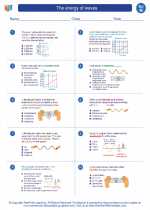Cambrian Period
The Cambrian Period is the first geological period of the Paleozoic Era, spanning from approximately 541 million years ago to 485 million years ago. It is known for being a time of great evolutionary diversification, often referred to as the "Cambrian Explosion."
Key Concepts
- Geological Time Scale: The Cambrian Period is part of the Phanerozoic Eon and is the first period of the Paleozoic Era.
- Cambrian Explosion: This refers to the rapid diversification of multicellular life forms during the Cambrian Period, leading to the emergence of many major animal groups.
- Fossils: The Cambrian Period is well known for the abundance of fossilized remains, which provide valuable insights into the early evolution of life on Earth.
- Environmental Changes: During the Cambrian Period, there were significant changes in ocean chemistry, climate, and the availability of oxygen, which likely influenced the diversification of life forms.
Study Guide
To understand the Cambrian Period thoroughly, it is important to focus on the following aspects:
- Geological Context: Study the position of the Cambrian Period in the geological time scale, its relation to other periods, and the major geological events that occurred during this time.
- Biological Evolution: Explore the concept of the Cambrian Explosion, the types of organisms that emerged, and the factors that may have contributed to this rapid diversification.
- Fossil Record: Examine the fossil evidence from the Cambrian Period, including the famous Burgess Shale and Chengjiang biota, to understand the diversity of life forms and their significance in evolutionary biology.
- Environmental Changes: Investigate the environmental conditions during the Cambrian Period, such as the oxygenation of the atmosphere and oceans, and their potential influence on the evolution of life.
By delving into these key areas, you can gain a comprehensive understanding of the Cambrian Period and its significance in the history of life on Earth.






